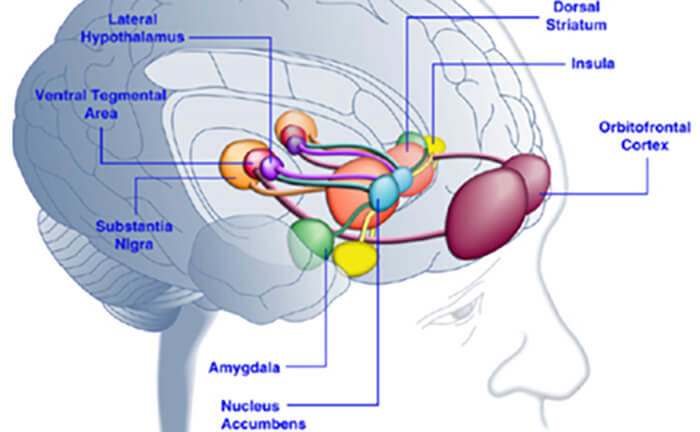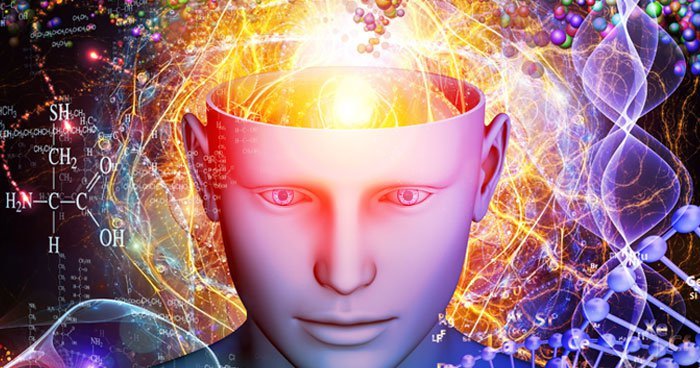There is a whole lot of talk about choosing love over fear as a driving force in our lives. Though this is crucial advice, it is important to acknowledge the importance of the fear response.
The Amygdala is a mass of grey matter inside each cerebral hemisphere, involved with the experiencing of emotions. This is where fear is processed and though fear is not all that it responds to, it is probably the most immediate. Being conscious of this process allows us to break free of a feedback loop of fear-response thus empowering us to consciously make better choices in life.
Gateway to the Senses
These two almond-shaped groups of nuclei located in the medial temporal lobe, known as the amygdala are a gateway of sensory input mostly connected to emotion and reaction. Since danger requires instant response for survival, it overrides all other responses. This response is called a "Pavlovian" mechanism in that this part of the brain works through association.
If a sound in the external world occurs right before something painful happens, you associate that sound with the painful event and then that sound will then later trigger a protective defense response. But if the sound occurs just before food, when you're hungry, then the sound will be associated with that kind of a positive or a repetitive event. -Joseph Ledoux, the Big Think

Marketers and others know that humans are easy to manipulate through fear and association. That's why a lady in a bikini is used to sell sports cars to middle-aged men. That's also why taking a date to a scary movie, or on a roller coaster, or a fast motorcycle ride creates a deep emotional bond of safety through having "made it through" a high-adrenaline or scary experience together. Most of these responses are happening on a subconscious level, but it doesn't need to be this way.
Unresolved trauma places us in an unconscious state of reactionary behavior as well. We may react to anything that even slightly reminds us of a traumatic event... unless we resolve that emotional trauma. Since trauma is part of life, and since the amygdala is an important part of our brains, let's get to know this aspect of being human so that we can make choices more consciously.
Emotional Hijacking
Emotional hijacking, also known as "amygdala hijacking", is a term coined by Daniel Goleman in his famous book, Emotional Intelligence, Why it can matter more than IQ. We all know what it's like to "lose it", "over-react", or have an "emotional melt-down" etc. Though it can be funny to witness in others, or embarrassing to experience in ourselves, there is a sophisticated reason the amygdala has this power over our rational mind.
Comment: In the following talk Daniel Goleman explains how to 'think with the prefrontal cortex' to avoid an amygdala hijack:
In very rare instances of extreme danger, where 1-2 seconds of response time can mean the difference between life and death, the amygdala is able to hijack the higher thinking centers in our neocortex (which can slow our responses) and order the body into a fight, flight, freeze, or collapse response. Sadly, many of us are stuck in this feedback loop most of the time when it is only meant to be reserved for rare, life-threatening instances. This reactive, fight-flight state is our sympathetic nervous system, whereas our parasympathetic nervous system is when we are resting, healing, and digesting.
We live in a fast-paced world and our biology is doing its' best to keep up. However, when we are driving down the road at 65 miles-per-hour and a dog runs in front of our car, or when we get fired from our job, or go through a painful divorce, our nervous system reacts as if we are experiencing a life-threatening situation. We may be good at suppressing our physical response, but adrenaline and cortisol is released into our system and can circulate in our system for up to 4 hours. This is called an amygdala hijack hangover. The result of chronic stress can cause people to be habitually stuck in a reactive mode of anxiety, have panic attacks, or unreasonable phobias.
Bringing Mindfulness into the Equation
Since amygdala hijackings bypass our thinking centers, consciously invoking our brains through counting, reading, or problem-solving can re-activate the neocortex and restore balance to the nervous system. Since reactionary states are associated with the sympathetic nervous system, sitting and taking 10 deep breaths will help the nervous system shift into parasympathetic mode which is nurturing and relaxing to the system.
Comment: The The Éiriú Eolas breathing/meditation technique is a powerful method of calming the mind and nervous system that can be quickly learned and will have immediate effects. There is no need to sit in special postures, or be present in a carefully prepared relaxing atmosphere, making it highly adaptability to the stressful conditions of the modern world.
All of the adrenaline and cortisol that is released into our bodies during moments of stress is often absorbed in our psoas muscle, which is a core muscle central to fight/flight. There are many stretches in yoga and other methods for releasing the stored stress in the psoas. For example, the brain changes when you meditate. Any daily practice of meditation, mindfulness, breathing, or yoga, will reduce the overall reactivity in your system and allow you to be less easily hijacked.
Comment: Constriction in the psoas muscle could also be responsible for back, hip, or knee pain, digestive issues and dysfunctional breathing. Learning to lengthen and release the 'muscle of the soul' can restore comfort and balance to the entire body: The 'Muscle of the Soul' may be triggering your fear and anxiety
If it weren't for our amygdala, many of us would not be here today because our ancestors would probably have not survived. Though we experience many stresses in life, the majority of them are not life-threatening, so we need to train our amygdala and nervous system to be more relaxed. This is central to conscious evolution, and increases our emotional intelligence. The ability to discern what is worth reacting to versus what just needs to be observed will help you in relationships, and will save you money by reducing impulse-buying. Best of all, this process of deepening our awareness of ourselves will give us a better sense of compassion for the often irrational behavior we witness in our own lives and in the lives of those around us.
If you know someone struggling with the effects of past trauma, it can also be helpful learn how to Hold Space for them. Likewise, gaining knowledge about how to heal the Four Kinds of Fear can be beneficial.







Comment: Further reading: